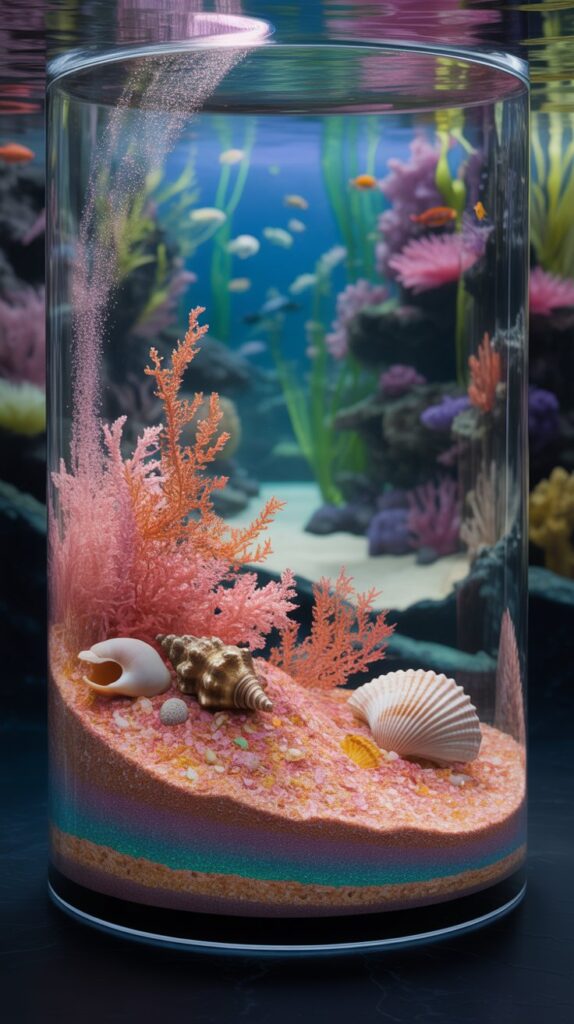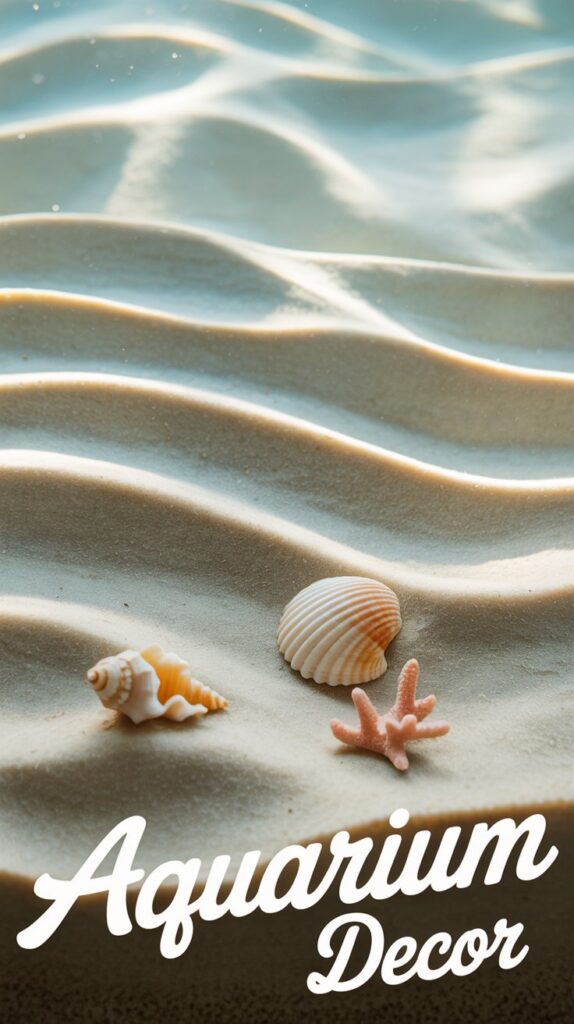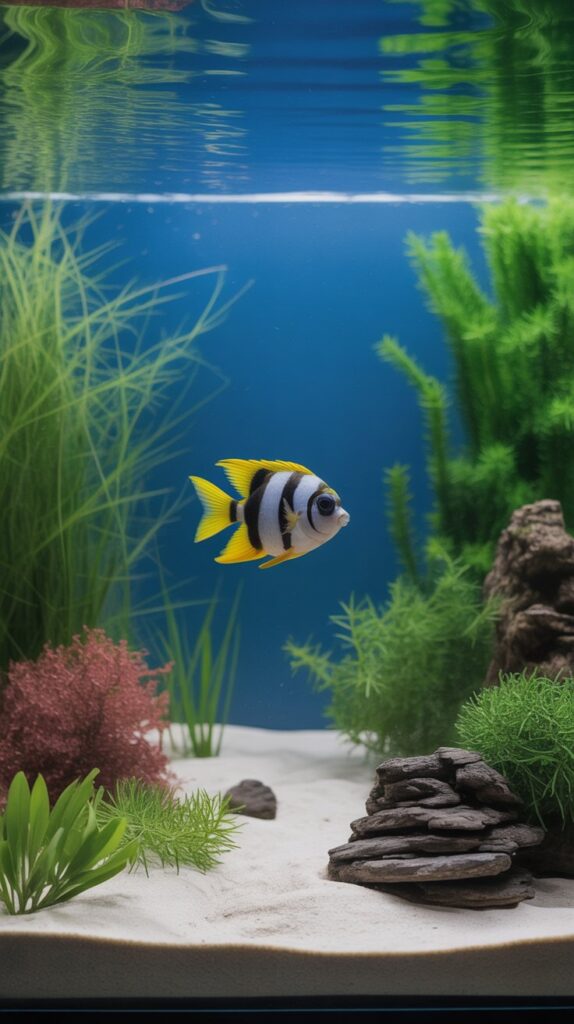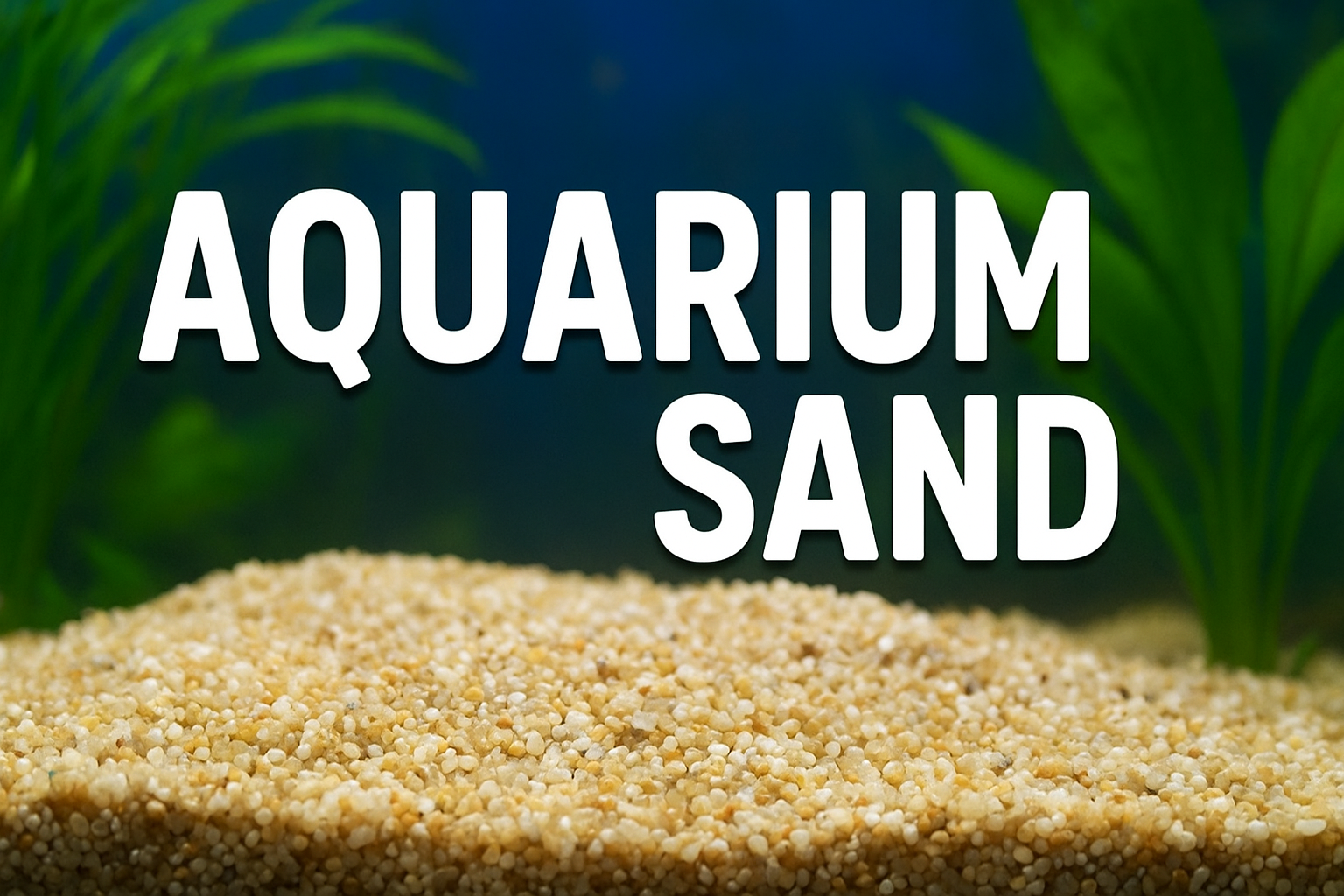Aquarium sand is one of the most important elements in creating a healthy, attractive, and functional environment for your fish and aquatic plants. Whether you are setting up a freshwater or saltwater aquarium, the right sand can make a big difference in water quality, biological filtration, and the overall look of your tank. Many aquarists choose aquarium sand because it closely mimics the natural habitat of aquatic species, provides a soft and safe substrate, and supports beneficial bacteria that keep the water clean.
In this detailed guide, we will cover everything you need to know about aquarium sand — from the different types available, their benefits, and how to use them, to maintenance tips and answers to frequently asked questions.
1. What is Aquarium Sand?
Aquarium sand is a type of substrate used at the bottom of fish tanks. It consists of small, fine grains that provide a soft and natural-looking surface. Sand plays several roles in an aquarium:
- It serves as a base for plants and decorations.
- It hosts beneficial bacteria that break down waste.
- It prevents debris from sinking deep into the substrate.
- It creates a natural environment for fish species that prefer sandy habitats, such as corydoras, loaches, and certain cichlids.
Unlike gravel, aquarium sand has smaller particles that can create a more uniform and smooth appearance, making it popular for both freshwater and saltwater setups.
2. Types of Aquarium Sand

There are several types of aquarium sand available, each with its own benefits and ideal uses. Choosing the right one depends on your aquarium type, the species you keep, and your personal preference for aesthetics.
2.1. Play Sand
- Affordable and widely available.
- Usually used in children’s sandboxes but can be rinsed and used in aquariums.
- May require more cleaning before use to remove dust and debris.
2.2. Silica Sand
- Fine, smooth texture and natural appearance.
- Popular in freshwater aquariums.
- Prevents waste from penetrating deeply, making cleaning easier.
2.3. Aragonite Sand
- Made from calcium carbonate.
- Ideal for saltwater and reef aquariums.
- Helps maintain stable pH and adds calcium to the water, beneficial for corals and marine life.
2.4. Black Sand
- Striking contrast that enhances fish colors.
- Often made from volcanic rock or coated materials.
- Suitable for planted aquariums and freshwater tanks.
2.5. Live Sand
- Contains beneficial bacteria.
- Speeds up the cycling process in marine tanks.
- Supports coral and invertebrate health.
3. Benefits of Using Aquarium Sand

3.1. Natural Appearance
Sand mimics riverbeds, lake bottoms, and ocean floors, creating a realistic aquatic environment.
3.2. Comfort for Bottom-Dwellers
Fish such as cory catfish, loaches, and rays prefer sand because it’s soft and gentle on their barbels.
3.3. Improved Biological Filtration
The small grains provide a large surface area for beneficial bacteria to grow, which helps break down ammonia and nitrites.
3.4. Better Waste Management
Waste tends to stay on the surface of sand, making it easier to clean during water changes.
3.5. Ideal for Aquascaping
Sand can be used to create slopes, riverbeds, and decorative landscapes in your aquarium.
4. How to Choose the Right Aquarium Sand
When selecting sand for your aquarium, consider these factors:
- Tank Type – Freshwater tanks may use silica or black sand, while saltwater tanks often use aragonite or live sand.
- Fish Species – Soft sand is ideal for bottom-dwellers; coarser sand may be better for digging fish.
- Water Chemistry – Some sands (like aragonite) raise pH, which is great for African cichlids or saltwater fish, but not for soft-water species.
- Color Preference – Light sand makes tanks look bright, while dark sand creates contrast.
5. Preparing Aquarium Sand Before Use

Proper preparation prevents cloudy water and protects your fish.
- Rinse Thoroughly – Place sand in a bucket, add water, stir, and pour off dirty water until it runs clear.
- Boil for Sterilization (optional) – Helps remove harmful microbes.
- Check for Sharp Edges – Avoid sand with jagged particles that can harm fish.
- Add Slowly – Pour sand into the aquarium gently to prevent clouding.
6. How to Add Sand to Your Aquarium
- Turn off filters and equipment.
- Add 1–2 inches of rinsed sand to the tank bottom.
- Place a plate or plastic bag over the sand.
- Pour water slowly onto the plate to avoid stirring up dust.
- Start filtration after the water clears.
7. Aquarium Sand Maintenance
Even though sand is easier to clean than gravel, regular maintenance is still important.
- Vacuum Lightly – Use a gravel vacuum but hover slightly above the surface to avoid sucking up sand.
- Stir the Sand – This prevents anaerobic pockets where harmful gases can build up.
- Spot Clean – Remove visible debris between water changes.
- Replace When Needed – Over time, sand can become compacted or lose its color; replace it every few years if necessary.
8. Common Problems with Aquarium Sand and Solutions
8.1. Cloudy Water
- Caused by dust in new sand.
- Solution: Rinse sand thoroughly before adding it.
8.2. Anaerobic Pockets
- Form when sand becomes compacted and oxygen can’t penetrate.
- Solution: Stir sand regularly or keep burrowing fish/snails.
8.3. pH Changes
- Some sands raise pH.
- Solution: Test water regularly and choose sand appropriate for your fish.
8.4. Sand Getting into Filters
- Can damage impellers.
- Solution: Keep filter intake slightly above the sand surface or use a sponge pre-filter.
9. Aquarium Sand vs. Gravel
| Feature | Sand | Gravel |
|---|---|---|
| Grain Size | Fine | Coarse |
| Waste Accumulation | Stays on surface | Falls between gaps |
| Appearance | Natural | Varied |
| Best for Bottom-Dwellers | Yes | No (can damage barbels) |
| pH Effect | Some sands raise pH | Usually neutral |
10. Best Aquarium Sand Brands
- CaribSea Super Naturals – Great for freshwater tanks.
- CaribSea Aragonite – Perfect for saltwater aquariums.
- Seachem Flourite Sand – Good for planted tanks.
- Imagitarium Black Sand – Stylish and safe for most fish.
11. Tips for Using Aquarium Sand Successfully
- Use a thin layer of sand (1–2 inches) to avoid compaction.
- Combine sand with root tabs if keeping live plants.
- Keep burrowing species like kuhli loaches to help keep sand fresh.
- Avoid mixing sand and gravel — they separate over time.
FAQs About Aquarium Sand
Q1: Can I use beach sand in my aquarium?
A: It’s not recommended because beach sand can contain harmful bacteria, pollutants, and salts that affect water chemistry.
Q2: How much sand do I need for my aquarium?
A: A general rule is 1–2 pounds of sand per gallon, depending on the desired depth.
Q3: Does aquarium sand need to be replaced?
A: Not often. If maintained well, sand can last for years, though you may need to top it up or replace it if it becomes compacted.
Q4: Is sand safe for all fish?
A: Most fish do well with sand, but some may prefer gravel. Always choose the substrate based on your fish species.
Q5: Will sand make my water cloudy forever?
A: No. Cloudiness usually clears within a day or two after proper rinsing and filtration.
Q6: Can I plant live plants in sand?
A: Yes, but sand alone has few nutrients, so root tabs or a nutrient-rich layer underneath will help.

